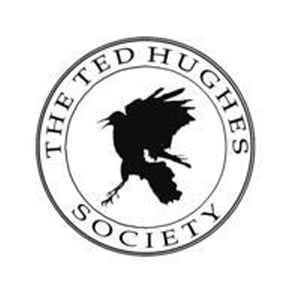Poetry by Ted Hughes
River (London: Faber and Faber, 1983)
Yvonne Reddick (Research Fellow, University of Central Lancashire) explores Hughes's mystical sequence of verse
River is a biocentric hymn to the regenerative powers of watercourses and aquatic creatures. Inspired by Hughes’s love of fishing and by his environmental activism, it charts the changes in aquatic ecosystems over the course of the seasons. Its evolution was appropriately fluid and organic. The collection which would eventually become River contains material which appeared long before the publication of the first Faber edition of the poems in 1983. The poem ‘Ophelia’, in which Hughes revisits the images of aquatic creatures used by Sylvia Plath, was originally published in Orts in 1978. ‘Night Arrival of Sea-Trout’ was a 1979 publication of the Morrigu Press, which Nicholas, Ted and Olwyn Hughes ran. In 1981, the Morrigu Press published Three River Poems; Morrigu, Paul Keegan notes, was appropriately ‘the Crow-headed Celtic water-goddess’[1]. Of these three poems, ‘Visitation’, which celebrates a rare sighting of the otter, was included in the first Faber edition of River. The other two River Poems were also included in the 1993 Faber and Faber volumeThree Books, in which the poems of River were altered and their order changed. The following poems were present in the 1983 edition of River but were omitted fromThree Books: ‘The Morning Before Christmas’, ‘New Year’, ‘For March Watercolours’, ‘Creation of Fishes’, ‘After Moonless Midnight’, ‘September’, ‘Riverwatcher’ and ‘Torridge’. The poem ‘An Eel’ was a late addition to the collection, first published in the 1994 children’s volume Collected Animal Poems, and reprinted in New Selected Poems [2].
Photographs by Peter Keene accompany the poems in the Faber edition of 1983. Keene’s images of fish, insects and riverside plants at various seasons provide a counterpoint to the collection rather than simply reproducing the scenes which feature in the poetry. Most of the photographs were taken in English landscapes. Yet Keene suffuses the collection with a sense of Morrigu’s watery Celtic realm by including photographs of Irish rivers. The Bunowen river in County Mayo [3] accompanies the poem ‘Strangers’, a peacock butterfly above the same river’s sea-trout pool [4] illustrates ‘After Moonless Midnight’, and concentric rings on the water formed by a rising fish on the Bundorragh in County Mayo [5] illustrate ‘September Salmon’.
Of the fluvial landscapes explored by the version of River in the Collected Poems, West Country rivers predominate: ‘The West Dart’ and ‘Torridge’ recall the territory of Tarka the Otter. Yet the rivers depicted by the poems are by no means confined to the British Isles. ‘Japanese River Tales’ sees a mythical snow-princess establish a wintry realm, while ‘The Gulkana’ celebrates the ancientness of an Alaskan river whose name is ‘A pre-Columbian glyph’[6]. River creates a water-cycle chronicling the changes in a diverse array of rivers from one winter to the next, documenting the life-cycle of the salmon as they spawn, die and make way for the next generation.
Yvonne Reddick is Research Fellow in Modern English and World Literatures at the University of Central Lancashire. She has published numerous articles on the poetry of Ted Hughes and her other other academic interests include the politics of environmental writing, French ecological theory, the poetry of Yves Bonnefoy and the use of mythology in texts of the Modernist era and beyond.
Notes
[1] Ted Hughes, Collected Poems, ed. Paul Keegan (London: Faber & Faber, 2003), p. 1282. All further citations are from this edition unless otherwise specified.
[2] Hughes, Collected Poems, ed. Keegan, pp. 1286-1290.
[3] Ted Hughes and Peter Keene, River, (London: Faber and Faber, 1983), p. 127.
[4] Hughes and Keene, River, p. 127.
[5] Hughes and Keene, River, p. 128.
[6] Hughes, Collected Poems, ed. Keegan, p. 665, l. 7.
